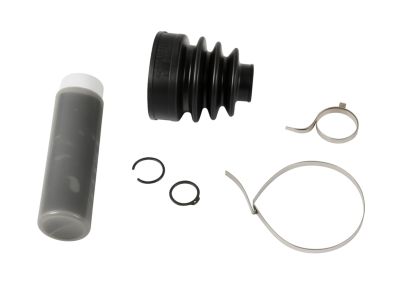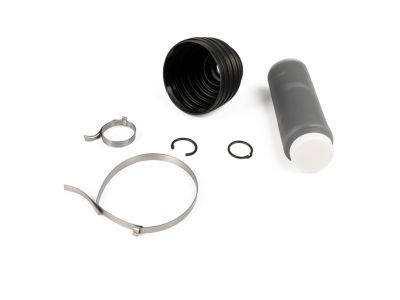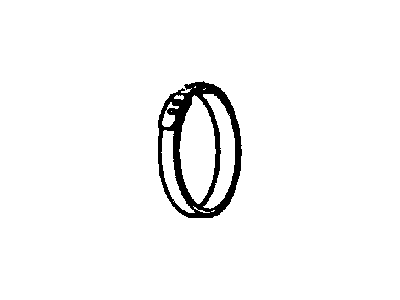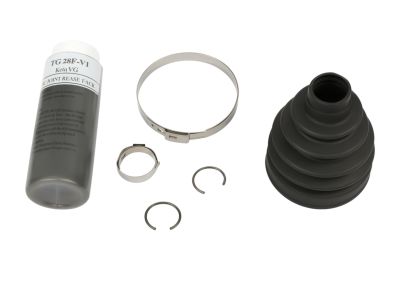
My Garage
My Account
Cart
Genuine Dodge Challenger CV Boot
Axle Boot- Select Vehicle by Model
- Select Vehicle by VIN
Select Vehicle by Model
orMake
Model
Year
Select Vehicle by VIN
For the most accurate results, select vehicle by your VIN (Vehicle Identification Number).
2 CV Boots found

Dodge Challenger Boot Kit-Half Shaft
Part Number: 5142216AA$77.57 MSRP: $119.00You Save: $41.43 (35%)
Dodge Challenger Boot Kit-Half Shaft
Part Number: 5142215AA$70.09 MSRP: $105.00You Save: $34.91 (34%)
Dodge Challenger CV Boot
The CV Boot of Dodge Challenger automobiles is part of its confronting that is specially developed in order to shield the CV joints which perform the function of transferring power from the transaxle to the wheels of the car. This flexible rubber or plastic boot contains and retains the required lubricant for the CV joints and at the same time helps to keep the dust away from entering the joint thus making it work as expected. Dodge Challenger models employ CV joint of the following types, Rzeppa joints for the outer ends, tripod or double offset joints for the inboard ends. The outer joints move through a greater range of angles than do those inboard, the latter joints allow for changes in shaft length relative to suspension movement. The inspection of CV Boot should be done frequently as cracks, or tears on this boot may affect the CV joint hence the performance of the vehicle.
Looking for affordable and high-quality auto parts? Then you have already arrived at the proper online shop. We offer all Dodge Challenger CV Boot at great affordable prices. Moreover, all genuine Dodge Challenger CV Boot come with a manufacturer's warranty. In the long run, you would realize you have saved a lot of trouble and money with OEM parts from here.
Dodge Challenger CV Boot Parts Questions & Experts Answers
- Q: How to check CV Boot and Shock Absorber on Dodge Challenger?A:The steering linkage and suspension components should be checked periodically. Worn or damaged suspension and steering linkage components can result in excessive and abnormal tire wear, poor ride quality and vehicle handling, and reduced fuel economy. To check the shock absorbers, park the vehicle on level ground, turn off the engine, and set the parking brake. Push down at each corner of the vehicle and release it, noting the movement of the body. It should stop moving and come to rest in a level position within one or two bounces. If the vehicle continues to move up and down or fails to return to its original position, a worn or weak shock absorber is likely the reason. Repeat this check at each corner of the vehicle. Raise the vehicle and support it securely on jack stands to check the shock absorbers for evidence of fluid leakage. A light film of fluid is not a cause for concern, but if leakage is noted, the shocks should be replaced as a set. Also, check that the shocks are securely mounted and undamaged, and inspect the upper mounts for damage and wear. Moving on to the steering and suspension check, visually inspect all components for damage and distortion, including seals, boots, bushings, and leaks. Pay particular attention to the bushings where the control arms meet the chassis. Clean the lower end of the steering knuckle and have an assistant move the wheel in and out while checking for movement at the steering knuckle-to-control arm ball joint. If there is any movement, the suspension ball joint(s) must be replaced. Grasp each front tire at the front and rear edges and push in at the front and pull out at the rear end to feel for play in the steering system components. If any freeplay is noted, check the idler arm and tie-rod ends for looseness. Lastly, the CV boots should be inspected regularly as they prevent dirt, water, and foreign material from damaging the constant velocity (CV) joints. Wash the boots with soap and water to remove oil and grease that can cause premature deterioration. The outer CV boot wears out sooner due to constant pivoting and should be checked for tears, cracks, and loose clamps. If there is evidence of cracks or leaking lubricant, it is recommended to replace the CV boot with a rebuilt unit.










